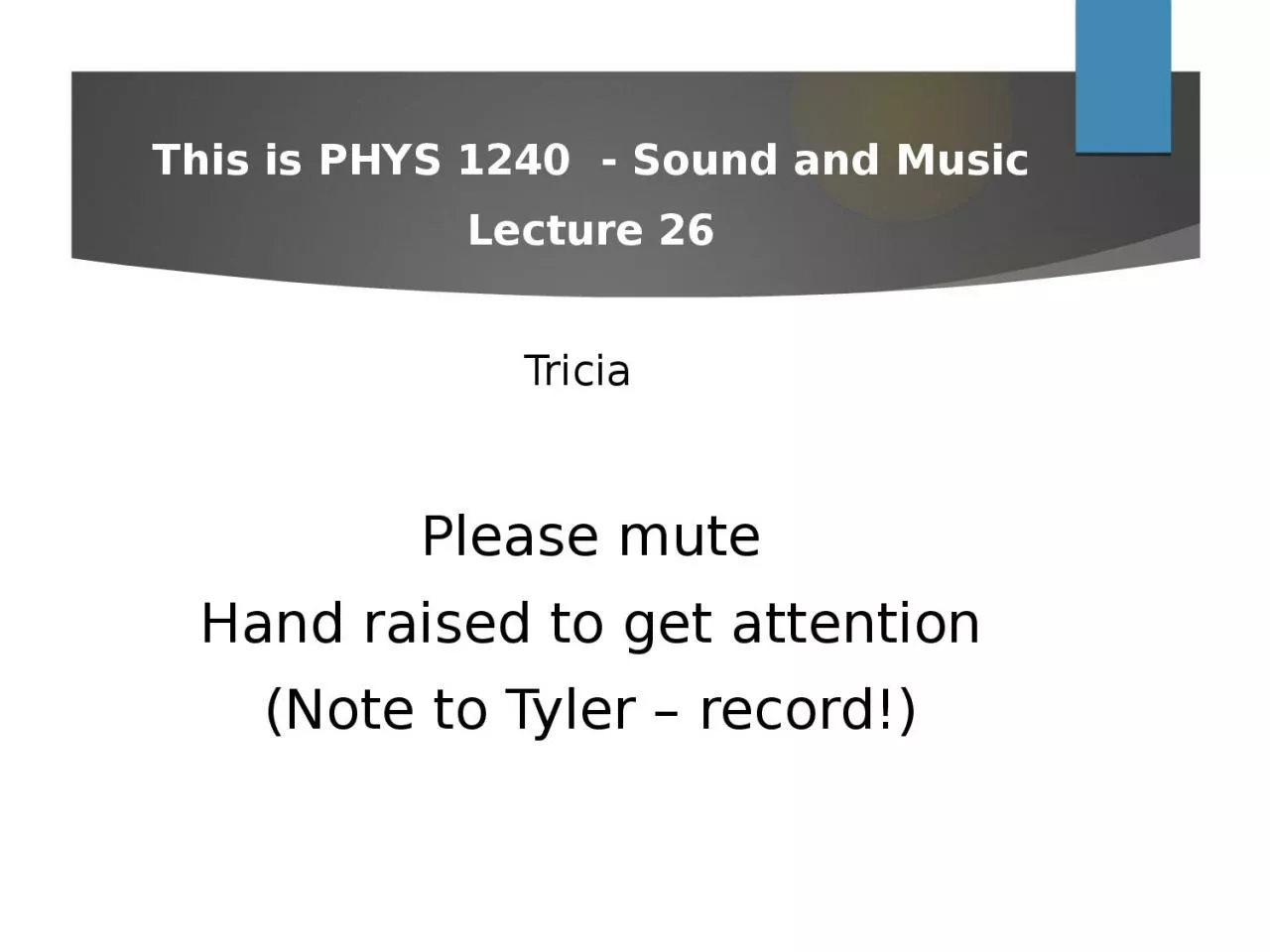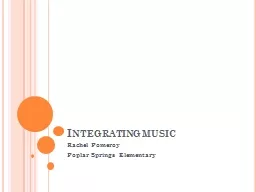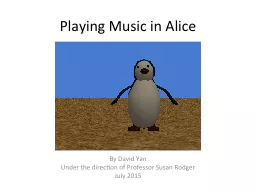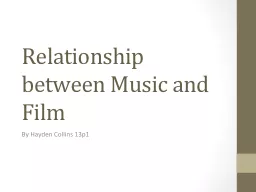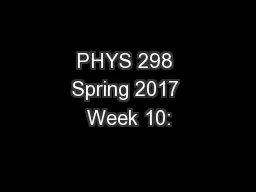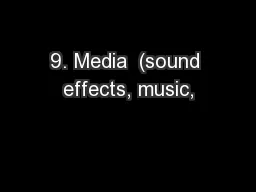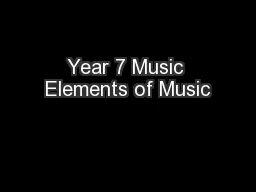PPT-This is PHYS 1240 - Sound and Music
Author : arya | Published Date : 2023-06-24
Lecture 26 Tricia Please mute Hand raised to get attention Note to Tyler record Physics 1240 Lecture 26 Today Language animal sounds Next Digital music Sound
Presentation Embed Code
Download Presentation
Download Presentation The PPT/PDF document "This is PHYS 1240 - Sound and Music" is the property of its rightful owner. Permission is granted to download and print the materials on this website for personal, non-commercial use only, and to display it on your personal computer provided you do not modify the materials and that you retain all copyright notices contained in the materials. By downloading content from our website, you accept the terms of this agreement.
This is PHYS 1240 - Sound and Music: Transcript
Download Rules Of Document
"This is PHYS 1240 - Sound and Music"The content belongs to its owner. You may download and print it for personal use, without modification, and keep all copyright notices. By downloading, you agree to these terms.
Related Documents

